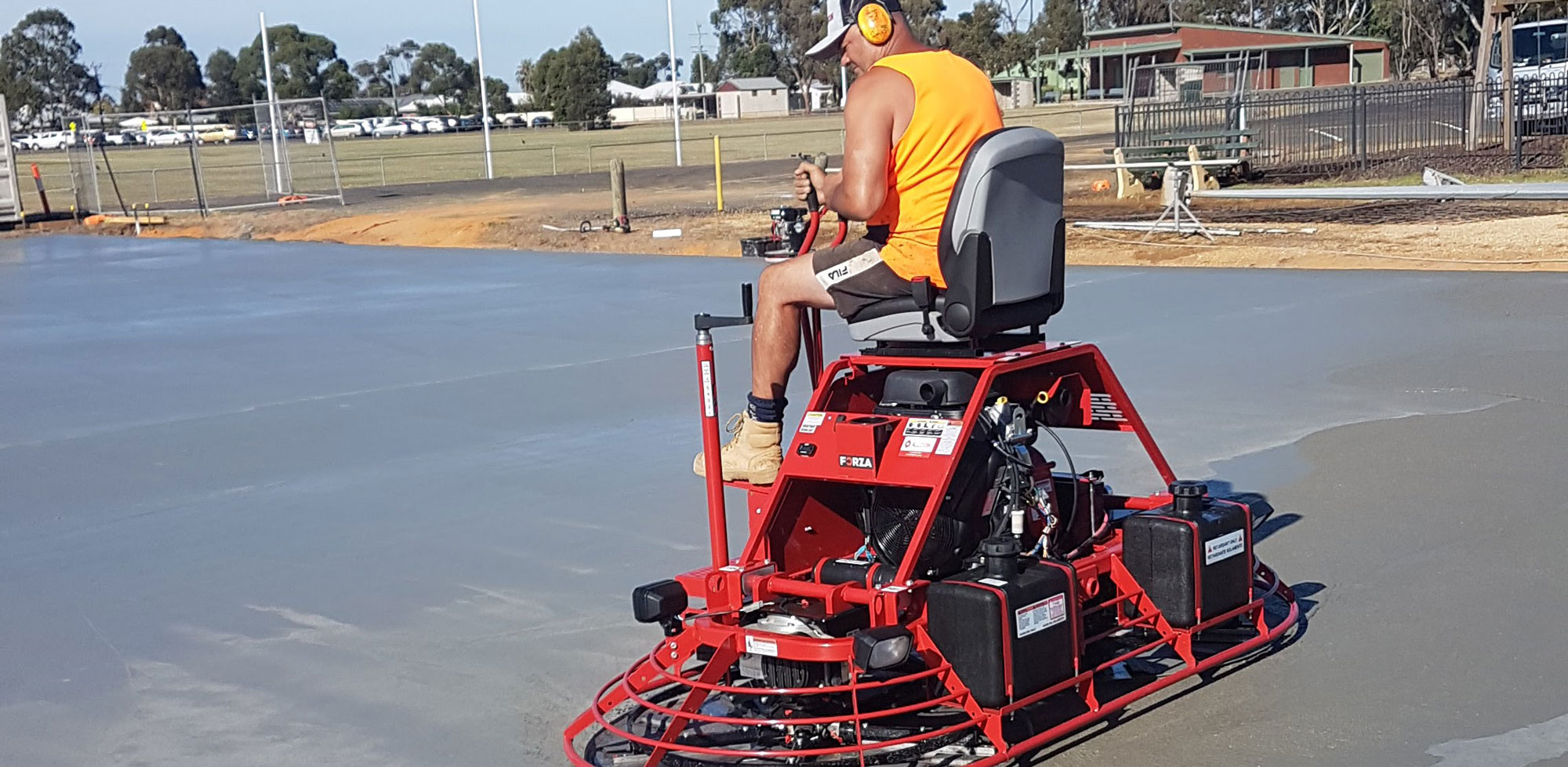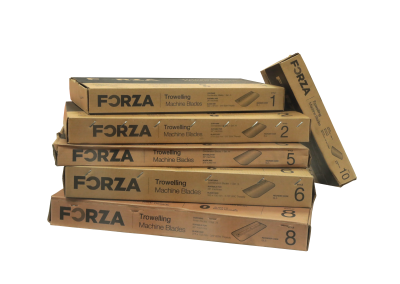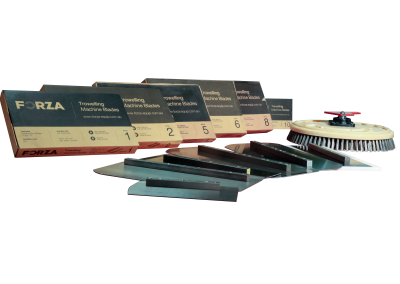
Trowel Machine Blades
Your guide to buying the right blades for your machine and project requirements
Power trowels, trowel machines, power floats, helicopters… whatever you prefer to call them, have blades or shoes which will wear as you trowel the concrete. These blades will need replacing regularly to ensure the correct finishing of concrete. However there are numerous different styles and sizes of blades intended for different finishes and purposes such as:
- Combination blades
- Finish blades
- Wide finish blades
- Black steel
- Polished steel
- Blue steel blades
- Plastic or teflon blades
- Float pans
How to identify what size trowel blades are required
Trowel machine blades are generally referred to in inches and generally refer to the size of the machine they are suitable for. E.g a set of 46” combination blades are not 46” long, they suit a 46” machine.
The easiest way to find out what blades your machine takes is to find the manufacturer’s serial number plate. This normally specifies the size of the machine in inches or millimeters. If this is unreadable or missing, simply measure the diameter of the trowel machine ring, or the distance from the end of one blade to the end of the opposite blade.
The below table should help you to identify the size of your machine.
Size (mm)
Approx 600mm
Approx 750mm
Approx 850mm
Approx 900mm
Approx 1000mm
Approx 1200mm
Size (Inches)
24″
30″
36″
36″
40″
46″

If you don’t have the machine handy and only have the blade, use the below table to try and identify the blade size:
(Please note: if measuring a worn blade, the width of the blade may be significantly less that what is stated in the table below)
Blade Size (L x W)
230mm x 120mm
270mm x 120mm
322mm x 187mm
322mm x 150mm
356mm x 150mm
356mm x 195mm
375mm x 155mm
375mm x 200mm
450mm x 155mm
450mm x 200mm
Machine Size
24” Machine
30” Machine
34” Machine
34” Machine
36” Machine
36” Machine
40” Machine
40” Machine
46” Machine
46” Machine
Type
Finish
Finish
Combination
Finish
Finish
Combination
Finish
Combination
Finish
Combination
One other thing to consider is the bolt pattern and bolts. Most blades have a universal bolt pattern which will suit most trowel machines however due to the influx of cheaper imported machines on the market, some may take a different bolt pattern. Typically, most blades will take an imperial bolt however some imported machines may be fitted with a metric bolt which will not fit into our standard blades. This can be overcome by replacing the blade bolts with imperial bolts.
Our trowel machine blades suit most of the common brands including: Forza, Allen, Whiteman, Wacker, Flextool, Bartell, Barikell and Master Finish, Cromellins, Hoppt etc.
Black steel or polished steel trowel machine blades
Our trowel blades are typically manufactured from either black steel or polished steel. Both provide a similar finish however the black steel blades are typically used in domestic and commercial applications such as house slabs, driveways, car parks etc. Polished steel blades will give a slightly smoother finish and are typically used in industrial applications such as factory floors.
Combination trowel machine blades
Combination blades typically have a beveled edge or edges and the carrier bar is typically offset to one side of the blade. They are used to break concrete in the initial passes or to provide a light textured or stippled finish. Combination blades are available for most trowel machine sizes however they are not typically available for 24” and 30” machines.
Finish trowel machine blades
Finish blades are a flat blade with the carrier bar located in the centre of the blade. Unlike combination blades, both sides of the blade can be used, once one side is worn, the blade can be rotated 180 degrees providing a new finishing edge. Finish blades are normally manufactured from heat treated steel and give the concrete a polished finish. They are normally used in the final stages of finishing to create a burnt finish.
A burnt or burn finish normally refers to a darkening of the concrete during the finishing process. The finish blades are pitched up to an angle to close the surface, this results in the blades wearing down due to the abrasion of the concrete. As the blades wear, the metal filings darken the surface of the concrete resulting in a dark, dense and extremely hard surface.
Wide finish trowel machine blades (flat finish)
Similar to the above mentioned finish blades, wide finish or flat finish blades are wider and marginally thicker than standard finish blades and are typically used on ride on trowel machines to provide a burn finish to concrete.
Blue steel trowel machine blades
Available in both combination, finish and wide finish styles, Blue steel blades are specially treated to provide up to 25% longer service life than regular steel blades. They are slightly thicker and marginally more flexible than standard blades improving blade performance and prolonging blade life.
Gold steel trowel machine blades
Similar to blue steel, however these blades are made from a heavier weight steel and tend to be more stiff. As a result they are only recommended to be used on ride-on trowel machines. The high chrome and carbon content increases abrasion resistance resulting in 25-50% longer life than most silver steel blades.
Plastic or teflon trowel machine blades
Plastic blades have only emerged on to the market in recent years and are a specialised blade used for burn finishes. As mentioned above in the finish blade section, when burning with steel blades, the concrete is darkened by the metal filings wearing off the blades and being troweled into the concrete. Whilst this finish may be desirable, it can result in inconsistent colouring of concrete. Conversely, when burn finishing with plastic blades, the plastic wears leaving in a lighter burn finish which tends to be more consistent than steel burn finishes.
However, finishing with plastic blades requires a different finishing process. The concrete needs to be closed up with steel combination or finishing blades to the point that it begins to burn. At this stage, the plastic blades can be used to burn the surface.
Caution needs to be taken using the plastic blades as they will heat up during the finishing process. If the blades are stationary on the surface at any point, they will burn an unsightly burn mark which will be very difficult to remove. It is recommended to lift the machine off with a crane whilst the blades are still rotating or build a platform at the edge of the slab to run the machine onto.
Float Pans
Float pans clip on to the blades of a trowel machine without any extra fasteners. They are typically used to “break” a slab in the initial passes. The pans create suction and pull slurry to the surface. They also fill or cut any imperfections left from screeding and bull floating. Once the surface has been floated, the pan can be unclipped from the trowel machine allowing the concrete to be finished with the combination or finishing blades fitted to the machine.
The smaller 24 and 30” pans can be used to create a low stipple finish, a great alternative to hand stippling.
In the sizes from 36-60” pans there are 2 different types, flat pans and super-flat pans. Flat pans have a small dish in the pan which puts less load on the machine but won’t leave as flat finish as a super flat pan. As the name suggests, super-flat pans are totally flat creating more suction and leaving a flatter surface.
These pans can be identified by the lip at the edge of the pan. A 45 degree lip means a flat pan, a 90 degree lip means a super flat pan.
In the larger sizes, there are 2 options for attaching the pans to the trowel machine. Z Clip pans feature a raised Z shaped clip which the blade clips into locking the pan on the machine. However, these pans are not suitable for use when crane lifting machines on site as the pans could slip off and fall and could cause serious injury.
Pin and clamp fittings are slightly different and feature 2 angle brackets fixed either side of the blade and arm. These angle brackets have a hole in which a pin is passed through, over the top of the blade carrier and through the hole in the opposite bracket. This locks the pan onto the machine providing safe crane lifting with pans.
Finally, 46” pans are available for both 4 and 5 bladed machines.
Not sure which Trowel machine blades are right for your project? Talk to the Allcon team
When purchasing trowel machine blades, you want to be sure you are purchasing the right blades for the job you need to get done. Taking all of the above into consideration is a great way to ensure you don’t end up regretting the purchase you make.
If you want even more assurance, speak to one of our experts today. We have over 100 years of collective product knowledge and have helped countless clients through the process of buying a new machine.
We only stock trowel machine blades that we are confident in and have a proven track record. Furthermore, this is backed up by our promise of “we service what we sell”. Our workshop is home to two fully qualified mechanics who not only build our equipment but also carry out maintenance, servicing and repairs on a range of construction equipment.
If you want peace of mind with your next purchase, look no further than Allcon.
Simply click here to contact us today
Or you can fill out the contact form on this page.





